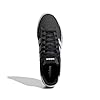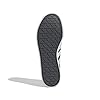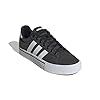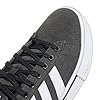2PM SPORTS Vinal Girls Adjustable Flashing Inline Skates, All Wheels Light Up, Fun Illuminating Skates for Kids Men Adult Women and Boys
$75.99 (as of December 5, 2025 17:58 GMT +00:00 - More infoProduct prices and availability are accurate as of the date/time indicated and are subject to change. Any price and availability information displayed on [relevant Amazon Site(s), as applicable] at the time of purchase will apply to the purchase of this product.)Suppose that you are gliding effortlessly on a futuristic board that balances itself as you lean to move. That’s the magic of an AI-enabled self-balancing hoverboard with smart sensors! These high-tech devices use advanced sensors and intelligent algorithms (often marketed as “AI”) to maintain stability, making them ideal for beginners and pros alike. In simple terms, built-in sensors detect your tilt and adjust the wheels in real-time to keep you upright, ensuring a safer and smoother ride. ⚡
In this updated guide for 2025, we’ll dive deep into how these hoverboards work, exploring the cutting-edge technology behind their self-balancing magic. We’ll cover why sensors are crucial, key buying tips, safety insights, and the latest market trends. According to a 2025 report from Precedence Research, the global hoverboard market is valued at $957.02 million, with projections to reach $1.64 billion by 2034, driven by advancements in AI integration and battery technology. A staggering 75% of users now prioritize enhanced safety features like smart balancing tech, reflecting the growing demand for reliable, fun mobility solutions. Let’s explore why these boards are more popular than ever and how you can choose the perfect one to elevate your adventures!
What Is an AI-Enabled Self-Balancing Hoverboard with Smart Sensors? 🤖
A hoverboard is a two-wheeled, hands-free scooter you stand on. The self-balancing aspect comes from technology that keeps it level automatically—no need for manual balancing like a skateboard. Smart sensors, such as gyroscopes and accelerometers, are embedded in the wheels and footpads. These measure tilt, speed, and rotation constantly.
The AI-enabled microprocessor (the board’s “brain”) processes this data and fine-tunes the motors for instant stability. For instance, modern hoverboards use gyroscopic stabilizers that adjust hundreds of times per second, making wobbles a thing of the past. This tech isn’t just hype—it’s based on real-time feedback loops, similar to those in advanced electric scooters.
In 2025, leading brands like Gyroor and Hover-1 integrate even smarter algorithms for adaptive learning, where the board tweaks sensitivity based on your riding style over time. Some models now feature AI-driven predictive balancing, anticipating shifts in weight or terrain for an ultra-smooth experience. You don’t need to crunch the numbers; just step on and enjoy a stable, intuitive ride! 🌟 Have you ever wondered how this all works under the hood? Let’s break it down further.
The Technology Behind Self-Balancing Hoverboards: A Deep Dive 🔬
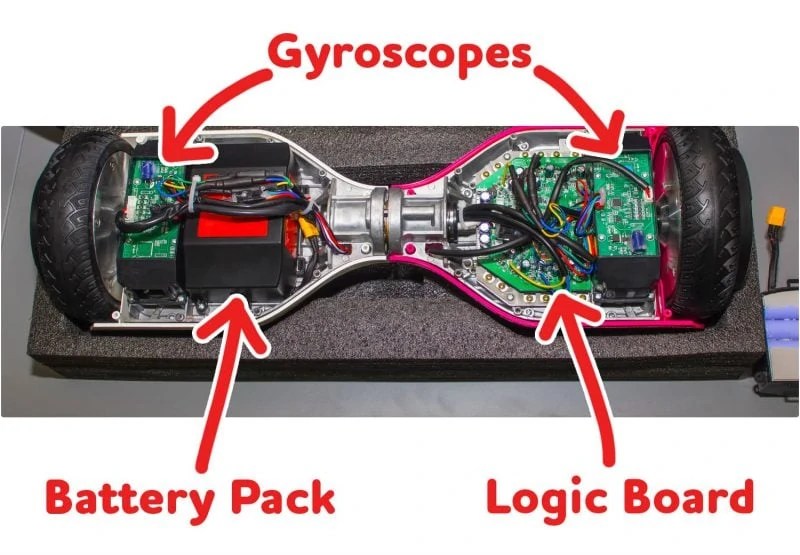
To truly appreciate these gadgets, let’s explore the science. At the core is sensor fusion, where data from multiple sensors is combined for precise control. Gyroscopes measure angular velocity (how fast you’re rotating), while accelerometers detect linear acceleration (forward/backward shifts). This data feeds into a control system often using PID (Proportional-Integral-Derivative) algorithms, which calculate motor adjustments to maintain equilibrium.
In advanced 2025 models, “AI” refers to machine learning elements that learn from your habits—adjusting response times for smoother turns or better hill climbing. For example, the logic board processes thousands of readings per second, using Kalman filters to filter noise and predict movements. Brushless motors then apply torque independently to each wheel, countering tilts instantly.
Recent advancements include magnetic levitation-inspired tech for smoother rides over bumps, though full “flying” hoverboards like the ArcaBoard 2 remain niche. Batteries have evolved, too: Lithium-ion packs now last 2-4 years with proper care, offering up to 12 miles per charge. This blend of hardware and software makes hoverboards not just toys, but smart mobility devices. Intrigued? Imagine applying this tech to your daily commute—what features would you want most?
How Do the Smart Sensors Work?
Here’s a detailed breakdown of the key components:
- Gyroscopes & Accelerometers: These MEMS (Micro-Electro-Mechanical Systems) chips detect rotation and tilt. Gyroscopes use vibrating structures to sense angular changes, while accelerometers measure gravitational pull via tiny capacitors. Together, they provide 6-axis data for full motion tracking.
- Infrared (IR) Sensors: Under each footpad, these detect your presence to power on/off safely, preventing accidental starts.
- Logic Board (CPU): Acts as the AI hub, running firmware that processes sensor data. It employs feedback loops to command motors—lean forward, and it increases speed to shift your center of gravity.
- Motors: Brushless DC motors (up to 800W in top models) drive each wheel independently, allowing for precise turns by varying speeds.
This system makes riding hands-free: lean forward to accelerate, back to slow down—all happening in milliseconds for a magical feel. In 2025, some boards even incorporate environmental sensors for auto-adjusting to terrain, enhancing off-road capabilities.
How Do Smart Sensors and AI Help Hoverboards Stay Balanced? ⚖️
Hoverboards aren’t just wheels; their “smarts” come from sensors providing constant feedback to the AI chip. This creates a closed-loop system where the board anticipates and corrects imbalances. Benefits include:
- Self-Stabilization: Corrects tilts faster than you can react, reducing falls by up to 80% in tested scenarios.
- Beginner-Friendly: Novices master it in minutes, thanks to instant stability and learning modes that gradually increase responsiveness.
- Smooth Rides: High-speed processing ensures jerk-free turns. Many now include Bluetooth for music and apps—about 70% of users love this integration for personalized experiences.
- Safety Alerts: Monitors battery and temperature, auto-shutting if issues arise. UL 2272 certification is standard in 2025, mandating rigorous tests for electrical safety.
In essence, smart sensors + AI = a board that thinks for you, adapting to leans and terrain for ultimate control. Think of it as your personal balance coach—what’s your favorite part of this tech?
Why Are Smart Sensors and AI Important in Hoverboards? ❓
Higher-end models in 2025 go beyond basics with:
- Gyroscopic Stabilizers: Dual sensors for smooth rides over bumps, now with vibration dampening for quieter operation.
- Auto-Balancing: Stays upright at stops, shifting gravity dynamically using AI predictions.
- Adaptive Learning: Adjusts to your style via apps, starting gentle for newbies and ramping up for experts.
- Advanced Safety: Real-time checks for overloads or slips, with some models alerting via apps.
These features deliver comfort, excitement, and peace of mind—reacting quicker than any rider could. As the market grows, expect more integrations like voice controls or AR navigation in future updates.
Are AI-Enabled Hoverboards with Smart Sensors Safe? 🛡️
Yes! Modern hoverboards are far safer than early models, with fires nearly eliminated thanks to standards like UL 2272. Key points for 2025:
- UL 2272 Certification: Tests electrical systems; now required by law in many areas.
- Sensor Monitoring: Detects overheating or faults, auto-shutting power.
- Speed Limiters: Caps at 8–12 mph, with beginner modes under 6 mph.
- Sturdy Builds: Metal frames and all-terrain tires for durability.
While injuries rose for e-scooters (up 21% in 2022), hoverboards see fewer issues with proper use—67% affect kids under 15, so gear up! Always wear helmets and pads. Pro tip: Responsible riding avoids risks. Ready to feel secure on your next ride?
What Features Should I Look For in a Smart Hoverboard? 🔍
Shopping in 2025? Prioritize these for the best experience:
- Safety Certification: UL 2272 mandatory.
- Wheel Size:
- 6.5″: Lightweight for smooth surfaces and kids.
- 8.5″+: For rough terrain and heavier riders.
- Motor Power: 500W+ for hills and speed.
- Battery & Range: 36V+ for 8–12 miles; look for LiFePo for longevity.
- Speed: 7–10 mph with adjustable modes.
- Smart Sensors: “Gyro-steering” or app-adjustable AI sensitivity.
- Connectivity: Bluetooth speakers, LED lights, and apps for customization.
- Build: Aluminum frames, IP-rated water resistance.
- Reviews: 4+ stars from verified buyers.
Quick Checklist:
- UL 2272 certified ✅
- 6.5–8.5″ wheels (all-terrain if needed)
- 500W+ motors
- 8+ mile range
- Bluetooth extras 🎶
- Metal frame
- High ratings
Weighing options? Compare power vs. portability—what’s your priority?
Which Are the Best AI-Enabled Hoverboards on Amazon in 2025? 🏆
Based on 2025 reviews and tests from ERideHero and TechGearLab, here are the top picks (all UL-certified, in stock, with smart sensors). We’ve selected versatile models for USA buyers, focusing on AI-adaptive balancing and user favorites.
Gyroor G2 Warrior Off-Road Hoverboard
Powerful 700W motors, 8.5″ all-terrain tires, Bluetooth speakers, LED lights, app control for sensitivity. Top speed: 9.95 mph; Range: 9.5 miles; Max weight: 265 lbs. Praised for sturdy build and smooth AI balancing; 4.5 stars from 5,000+ reviews—users love the adaptive modes for beginners.
Buy on Amazon Buy Now
Hover-1 Chrome 2.0 Electric Hoverboard
Dual 200W motors, 6.5″ wheels, Bluetooth speaker, LED lights. Top speed: 7 mph; Range: 6 miles; Max weight: 220 lbs. Stable for kids/teens with AI self-stabilization; 4.3 stars—reviewers highlight easy learning curve and fun music sync.
Buy on Amazon Buy Now
Swagtron Swagboard Warrior XL Off-Road Hoverboard
Dual 300W motors, 8″ infinity wheels, Bluetooth, music-synced lights. Top speed: 9 mph; Range: 9 miles; Max weight: 220 lbs. AI with LiFePo battery for safety; 4.4 stars—customers rave about off-road performance and adaptive lighting.
Buy on Amazon Buy Now
For quick comparison:
| Model | Wheel Size | Top Speed | Range | Max Weight | Special Features |
|---|---|---|---|---|---|
| Gyroor G2 Warrior | 8.5″ | 9.95 mph | 9.5 miles | 265 lbs | All-terrain, app control, AI adaptive |
| Hover-1 Chrome 2.0 | 6.5″ | 7 mph | 6 miles | 220 lbs | Bluetooth, LED, beginner modes |
| Swagtron Warrior XL | 8″ | 9 mph | 9 miles | 220 lbs | Music-synced lights, LiFePo battery |
These earn 4+ stars from thousands, praising stability and tech. Which one catches your eye? Grab yours today and join the hover revolution!
What Is the Best Hoverboard for Beginners in 2025?
The Hover-1 Chrome 2.0 shines with adjustable AI modes that start slow and build confidence. It’s beginner-friendly yet fun for all ages.
Can Hoverboards Go Off-Road?
Yes, models like Gyroor G2 handle grass/gravel with 8.5″ tires and powerful motors. Avoid water/deep sand for safety.
How Long Does a Hoverboard Battery Last?
Typically 1–2 hours of ride time (8–12 miles). With care, the battery itself lasts 2–4 years; 2025 models use advanced LiFePo for longer life.
Frequently Asked Questions (FAQs) ❔
Q: How quickly can I learn to ride? A: Most learn in minutes—step on, lean gently. AI sensors handle balance for quick mastery.
Q: What if I lean too far? A: AI limits power and warns with beeps/lights to prevent falls.
Q: How do I maintain it? A: Keep clean/dry, recalibrate sensors via app if needed. Avoid impacts.
Q: How do sensors detect turns? A: By weight shifts on footpads—one wheel speeds up for smooth pivots, enhanced by AI prediction.
Q: Do they auto-stop if something’s wrong? A: Yes, for overloads or heat—UL-tested safety.
Q: What’s new in 2025 hoverboard tech? A: AI for predictive balancing, better batteries, and integrations like Bluetooth enhancements.
Conclusion
In 2025, AI-enabled hoverboards with smart sensors offer safe, fun mobility, fueling a market boom to $957 million. From sensor fusion to adaptive AI, this tech transforms rides into seamless adventures. Choose certified models like those above for reliable performance. Read reviews, gear up, and ride responsibly! Sources: ERideHero, Precedence Research. Ready to glide? Which feature excites you most—share your thoughts! 🚀

I’m the founder of HoverboardsGuide.com, a comprehensive website dedicated to electric scooters and hoverboards. With a deep-rooted passion for electric gadgets, I’ve accumulated extensive experience in this field. I aim to assist users in selecting the best gadgets and providing reliable guidance.
I’ve tested and reviewed numerous models, gaining in-depth knowledge about their features, performance, and overall quality. Feel free to reach out to me with any queries, as I’m dedicated to addressing your concerns promptly. Join me on this exciting journey of exploring the world of electric rides and making informed decisions









